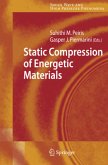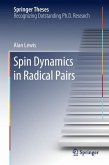This book uses experimental and computational methods to rationalize and predict for the first time the relative impact sensitivities of a range of energetic materials. Using knowledge of crystal structures, vibrational properties, energy-transfer mechanisms, and experimentally measured sensitivities, it describes a model that leads to excellent correlation with experimental results in all cases. As such, the book paves the way for a new, fully ab initio approach for the design of safer energetic materials based solely on knowledge of their solid-state structures.
Energetic materials (explosives, propellants, gas generators, and pyrotechnics) are defined as materials that release heat and/or gaseous products at a high rate upon stimulus by heat, impact, shock, sparks, etc. They have widespread military and civilian uses, including munitions, mining, quarrying, demolition, emergency signaling, automotive safety, and space exploration. One of their most important properties issensitivity to accidental initiation during manufacture, transport, storage, and operation, which has important implications for their safe use.
Energetic materials (explosives, propellants, gas generators, and pyrotechnics) are defined as materials that release heat and/or gaseous products at a high rate upon stimulus by heat, impact, shock, sparks, etc. They have widespread military and civilian uses, including munitions, mining, quarrying, demolition, emergency signaling, automotive safety, and space exploration. One of their most important properties issensitivity to accidental initiation during manufacture, transport, storage, and operation, which has important implications for their safe use.








